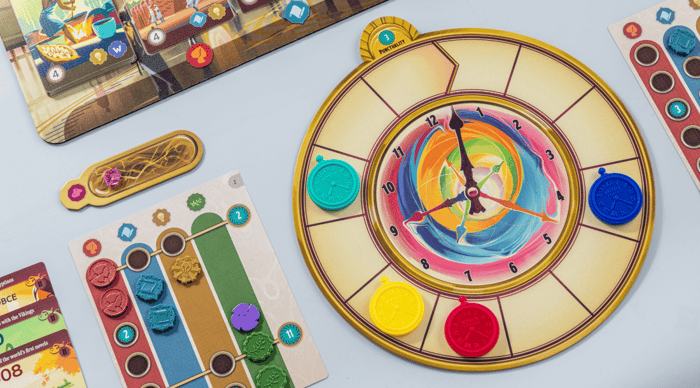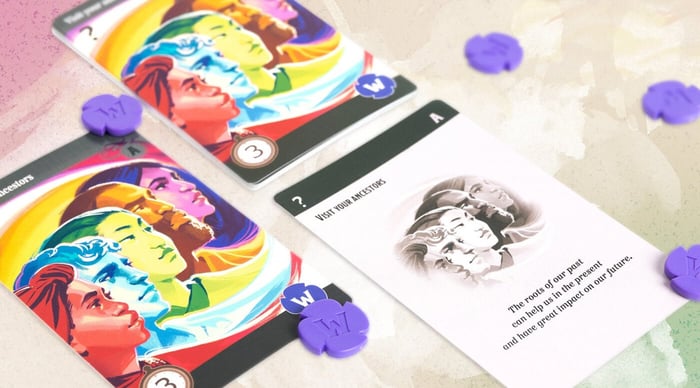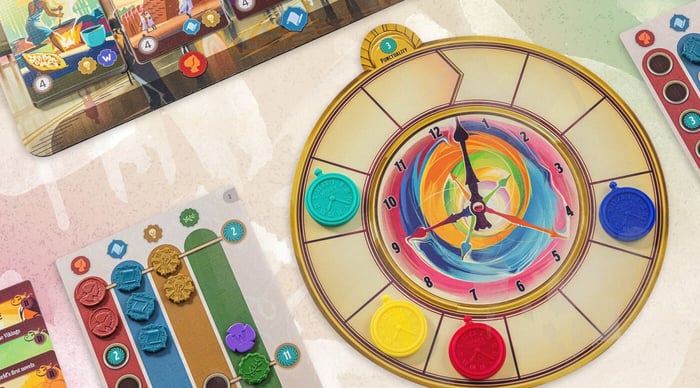When we set out to find an artist for Trekking Through History, we had high standards. We knew it wouldn't be easy to find someone who could create engaging, beautiful scenes from throughout human history. But we're confident we found the right person for the job with Eric Hibbeler.
Eric has an impressive resume with clients like Disney, Atari, and Renegade Game Studios, and he really took the art and cards in Trekking Through History to the next level. Listen to Eric talk about making the art for the game in the below video. Then read his Q&A to learn how he got started in board games. This is part of our series about the making of Trekking Through History.
How did you get started in art and illustration?
I was around 12 years old when reading Calvin and Hobbes and Pokémon manga got me much more serious about being an artist. My professional career started while I was still studying at the Kansas City Art Institute and doing freelance jobs here and there. I worked at a small video game studio in St. Louis after I graduated in 2012. A couple of years later, I moved back to Kansas City to work at an animation studio called MK12, where I stayed until 2017 before switching to freelance more or less full time.
How did you get started in working on board games?
I had only done one board game job prior to going freelance in 2017. When I suddenly needed to find more clients, I reached out to folks in the board game industry with my portfolio. Board games have been a mainstay of my professional work ever since.
What other artists do you personally admire?
Since my work has a retro flair, I tend to look to a lot of illustrators of the mid-century time period and earlier. There are too many to name, but Gil Elvgren, Dean Cornwell, Frank Frazetta, Coby Whitmore, Bob Peak and Drew Struzan have all been big influences.
What was challenging about creating the art for this game?
The biggest challenge was the large volume of cards! There was so much to research and gather references for. I've never had to use a spreadsheet to track my progress on a project before, but it was crucial with this one!
What did you enjoy about creating the art for this game?
I had been longing to use a travel poster aesthetic on a project for a while, and this seemed like the perfect opportunity. Since there were so many different card illustrations, I got to use basically every color palette I could think of several times over and it really stretched me creatively. I also enjoyed being able to pay homage to some of my favorite pieces of art history through the compositions I chose.
How did you decide what to feature on the cards and make sure it would be true to the era?
I usually featured whatever I thought would be the most interesting or memorable imagery from a given event, but hopefully shown from a perspective most people hadn't seen before. We tend to think of history as being in black and white or sepia tones because of the nature of photography and old illustrations, so I definitely took some liberties in using the travel poster look to inject a lot of color, drama and atmosphere wherever I could. The travel posters I love most are less concerned with showing the destination literally, but are more focused on showing how it feels to be there. I took a similar approach with the cards and tried describing the feeling of being in that time and place and why it's remarkable, especially for events that I found very difficult to research.
If we want to see more of your work or projects, where can we do that?
My website is EricHibbeler.com. You can also find me on Instagram and on Twitter.
Do you have a favorite event from the game?
I've been interested in medieval history since an early age, so I loved drawing Joan of Arc and the joust in the Accession Day Tilt.
As the artist for this game, what do you hope people get out of it?
I hope that it makes people curious to learn more. One of the delights (and dangers to my schedule) of doing the research for this project was constantly going down rabbit holes to learn more. Every card represents a specific dramatic moment in history, but the people that lived them often had really remarkable lives before and after that particular point, so there's a lot to explore!
To learn more about Trekking Through History and to get updates, go here.
Wondering how we chose the events for Trekking Through History? Read about it here.





